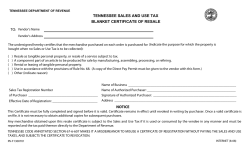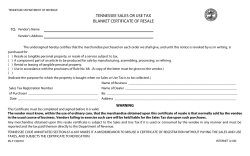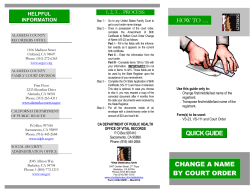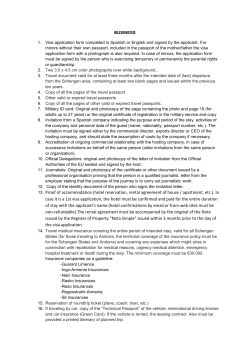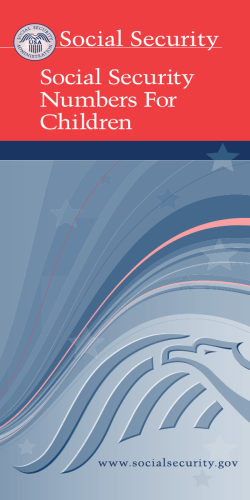
PIX/ASA : Obtain a Digital Certificate for the CA using ASDM
PIX/ASA : Obtain a Digital Certificate for the Security Appliance from a Microsoft Windows 2003 CA using ASDM Document ID: 71050 Contents Introduction Prerequisites Requirements Components Used Related Products Conventions Configure the ASA to Exchange Certificates with the Microsoft CA Task Instructions to Configure the ASA Results Verify Check and Manage Your Certificate Commands Troubleshoot Commands Related Information Introduction Digital certificates can be used to authenticate network devices and users on the network. They can be used to negotiate IPSec sessions between network nodes. Cisco devices identify themselves securely on a network in three main ways: 1. Pre−Shared Keys. Two or more devices can have the same shared secret key. Peers authenticate each other by computing and sending a keyed hash of data that includes the preshared key. If the receiving peer is able to create the same hash independently using its preshared key, it knows that both peers must share the same secret, thus authenticating the other peer. This method is manual and not very scalable. 2. Self−Signed Certificates. A device generates its own certificate and signs it as being valid. This type of certificate should have limited usage. Using this certificate with SSH and HTTPS access for configuration purposes are good examples. A separate username/password pair is needed to complete the connection. Note: Persistent Self−Signed Certificates survive router reloads because they are saved in the nonvolatile random−access memory (NVRAM) of the device. Refer to Persistent Self−Signed Certificates for more information. One good example of use is with SSL VPN (WebVPN) connections. 3. Certificate Authority Certificate. A third party validates and authenticates the two or more nodes that attempt to communicate. Each node has a public and private key. The public key encrypts data, and the private key decrypts data. Because they have obtained their certificates from the same source, they can be assured of their respective identities. The ASA device can obtain a digital certificate from a third−party with a manual enrollment method or an automatic enrollment method. Note: The enrollment method and type of digital certificate you choose is dependent upon the features and functions of each third−party product. Contact the vendor of the certificate service for more information. The Cisco Adaptive Security Appliance (ASA) can use pre−shared keys or digital certificates provided by a third−party Certificate Authority (CA) to authenticate IPSec connections. In addition, the ASA can produce its own self−signed digital certificate. This should be used for SSH, HTTPS, and Cisco Adaptive Security Device Manager (ASDM) connections to the device. This document demonstrates the procedures necessary to automatically obtain a digital certificate from a Microsoft Certificate Authority (CA) for the ASA. It does not include the manual method of enrollment. This document uses ASDM for the configuration steps, as well as presents the final command−line interface (CLI ) configuration. Refer to Cisco IOS Certificate Enrollment Using Enhanced Enrollment Commands Configuration Example in order to learn more about the same scenario with Cisco IOS® platforms. Refer to Configuring the Cisco VPN 3000 Concentrator 4.7.x to Get a Digital Certificate and a SSL Certificate in order to learn more about the same scenario with the Cisco VPN 3000 Series Concentrator. Prerequisites Requirements Ensure that you meet these requirements before you attempt this configuration: Requirements for the ASA device • Configure the Microsoft® Windows 2003 Server as a CA. Refer to your Microsoft documentation or to Public Key Infrastructure for Windows Server 2003 • In order to allow the Cisco ASA or PIX Version 7.x to be configured by the Adaptive Security Device Manager (ASDM), refer to Allowing HTTPS Access for ASDM. • Install the Add−on for Certificate Services (mscep.dll). • Obtain the executable file (cepsetup.exe) for the Add−on from the Simple Certificate Enrollment Protocol (SCEP) Add−on for Certificate Services or the mscep.dll file from the Windows Server 2003 Resource Kit Tools . Note: Configure the correct date, time, and time zone on the Microsoft Windows machine. The use of the Network Time Protocol (NTP) is highly recommended but not necessary. Components Used The information in this document is based on these software and hardware versions: • Cisco ASA 5500 Series Adaptive Security Appliance, Software Version 7.x and later • Cisco Adaptive Security Device Manager Version 5.x and later • Microsoft Windows 2003 Server Certificate Authority Related Products This configuration can also be used with Cisco PIX 500 Series Security Appliance Version 7.x. Conventions Refer to the Cisco Technical Tips Conventions for more information on document conventions. Configure the ASA to Exchange Certificates with the Microsoft CA Task In this section, you are shown how to configure the ASA to receive a certificate from the Microsoft Certificate Authority. Instructions to Configure the ASA Digital certificates use the date/time/time zone component as one of the checks for certificate validity. It is imperative to configure the Microsoft CA and all your devices with the correct date and time. The Microsoft CA uses an add−on (mscep.dll) to its Certificate Services in order to share certificates with Cisco devices. Complete these steps to configure the ASA: 1. Open the ASDM application and click the Configuration button. a. From the left menu, click the Properties button. b. From the navigation pane, click Device Administration > Device. c. Enter a Host Name and Domain Name for the ASA. Click Apply. d. When prompted, click Save > Yes. 2. Configure the ASA with the correct date, time, and time zone. This is important for certificate generation of the device. Use an NTP server, if possible. a. From the navigation pane, click Device Administration > Clock. b. In the Clock window, use the fields and drop−down arrows to set the correct date, time, and time zone. 3. The ASA must have its own key pair (private and public keys). The public key will be sent to the Microsoft CA. a. From the navigation pane, click Certificate > Key Pair. b. Click the Add button, and the Add Key Pair dialogue box displays. c. Check the radio button beside the blank field of the Name area, and type in the name for the key. d. Click the Size: arrow by the drop−down box to choose a size for the key, or accept the default. e. Check the General Purpose radio button under Usage. f. Click the Generate Now button to regenerate the keys and return to the Key Pair window, where you can view the information for the key pair. 4. Configure the Microsoft CA to be considered trustworthy. From the navigation pane, click Trustpoint > Configuration. a. From the Configuration window, click the Add button. b. The Edit Trustpoint Configuration window displays. c. Fill in a name for the Trustpoint with the name of the CA. d. Click the Key Pair: arrow by the drop−down box, and choose the name of the key pair that you created. e. Check the Use automatic enrollment radio button, and enter the URL for the Microsoft CA: http://CA_IP_Address/certsrv/mscep/mscep.dll. 5. Click the Crl Retrieval Method tab. a. Uncheck the Enable HTTP and Enable Lightweight Directory Access Protocol (LDAP) check boxes. b. Check the Enable Simple Certificate Enrollment Protocol (SCEP) check box. Leave all other tab settings at their default settings. c. Click the OK button. 6. Authenticate and enroll with the Microsoft CA. From the navigation pane, click Certificate > Authentication. Make sure the the newly created trustpoint shows in the Trustpoint Name: field. Click the Authenticate button. 7. A dialogue box displays to inform you that the trustpoint has been authenticated. Click the OK button. 8. From the navigation pane, click Enrollment. Make sure the trustpoint name displays in the Trustpoint Name field, and click the Enroll button. 9. A dialogue box displays to inform you that the request was sent to the CA. Click the OK button. Note: On a Microsoft Windows Stand−Alone machine you must issue the certificates for any requests that have been submitted to the CA. The certificate will be in a pending status until you right click the certificate and click issue on the Microsoft Server. Results This is the CLI configuration that results from the ASDM steps: ciscoasa ciscoasa# sh run ASA Version 7.2(1) ! hostname ciscoasa domain−name cisco.com enable password t/G/EqWCJSp/Q6R4 encrypted names name 172.22.1.172 AUSNMLAAA01 ! interface Ethernet0/0 nameif outside security−level 0 ip address 172.22.1.160 255.255.255.0 ! interface Ethernet0/1 nameif inside security−level 100 ip address 10.4.4.1 255.255.255.0 ! interface Ethernet0/2 shutdown no nameif no security−level no ip address ! interface Management0/0 shutdown no nameif no security−level no ip address ! passwd 2KFQnbNIdI.2KYOU encrypted ftp mode passive !−−− Set your correct date/time/time zone ! clock timezone CST −6 clock summer−time CDT recurring dns server−group DefaultDNS domain−name cisco.com pager lines 20 logging enable logging asdm informational mtu inside 1500 mtu outside 1500 asdm image disk0:/asdm521.bin no asdm history enable arp timeout 14400 nat (inside) 0 0.0.0.0 0.0.0.0 route outside 0.0.0.0 0.0.0.0 172.22.1.1 1 timeout xlate 3:00:00 timeout conn 1:00:00 half−closed 0:10:00 udp 0:02:00 icmp 0:00:02 timeout sunrpc 0:10:00 h323 0:05:00 h225 1:00:00 mgcp 0:05:00 mgcp−pat 0:05:00 timeout sip 0:30:00 sip_media 0:02:00 sip−invite 0:03:00 sip−disconnect 0:02:00 timeout uauth 0:05:00 absolute username cisco password VjcVTJy0i9Ys9P45 encrypted privilege 15 http server enable http AUSNMLAAA01 255.255.255.255 outside http 172.22.1.0 255.255.255.0 outside http 64.101.0.0 255.255.0.0 outside no snmp−server location no snmp−server contact snmp−server enable traps snmp authentication linkup linkdown coldstart ! !−−− identify the trustpoint ! crypto ca trustpoint ausnmlaaa01 enrollment url http://172.22.1.172:80/certsrv/mscep/mscep.dll keypair key1 crl configure no protocol http no protocol ldap !−−− the certificate chain generated automatically crypto ca certificate chain ausnmlaaa01 certificate 61c79bea000100000008 30820438 30820320 a0030201 02020a61 c79bea00 01000000 08300d06 092a8648 86f70d01 01050500 30423113 3011060a 09922689 93f22c64 01191603 636f6d31 15301306 0a099226 8993f22c 64011916 05636973 636f3114 30120603 55040313 0b617573 6e6d6c61 61613031 301e170d 30363038 31363231 34393230 5a170d30 37303831 36323135 3932305a 30233121 301f0609 2a864886 f70d0109 02131263 6973636f 6173612e 63697363 6f2e636f 6d30819f 300d0609 2a864886 f70d0101 01050003 818d0030 81890281 8100c2c7 fefc4b18 74e7972e daee53a2 b0de432c 4d34ec76 48ba37e6 e7294f9b 1f969088 d3b2aaef d6c44cfa bdbe740b f5a89131 b177fd52 e2bfb91c d665f54e 7eee0916 badc4601 79b4f7b3 8102645a 01fedb62 e8db2a60 188d13fc 296803a5 68739bb6 940cd33a d746516f 01d52935 8b6302b6 3c3e1087 6c5e91a9 c5e2f92b d3cb0203 010001a3 8201d130 8201cd30 0b060355 1d0f0404 030205a0 301d0603 551d1104 16301482 12636973 636f6173 612e6369 73636f2e 636f6d30 1d060355 1d0e0416 0414080d fe9b7756 51b5e63b fa6dcfa5 076030db 08c5301f 0603551d 23041830 16801458 026754ae 32e081b7 8522027e 33bffe79 c6abb730 75060355 1d1f046e 306c306a a068a066 86306874 74703a2f 2f617573 6e6d6c61 61613031 2f436572 74456e72 6f6c6c2f 6175736e 6d6c6161 61303128 31292e63 726c8632 66696c65 3a2f2f5c 5c415553 4e4d4c41 41413031 5c436572 74456e72 6f6c6c5c 6175736e 6d6c6161 61303128 31292e63 726c3081 a606082b 06010505 07010104 81993081 96304806 082b0601 05050730 02863c68 7474703a 2f2f6175 736e6d6c 61616130 312f4365 7274456e 726f6c6c 2f415553 4e4d4c41 41413031 5f617573 6e6d6c61 61613031 2831292e 63727430 4a06082b 06010505 07300286 3e66696c 653a2f2f 5c5c4155 534e4d4c 41414130 315c4365 7274456e 726f6c6c 5c415553 4e4d4c41 41413031 5f617573 6e6d6c61 61613031 2831292e 63727430 3f06092b 06010401 82371402 04321e30 00490050 00530045 00430049 006e0074 00650072 006d0065 00640069 00610074 0065004f 00660066 006c0069 006e0065 300d0609 2a864886 f70d0101 05050003 82010100 0247af67 30ae031c cbd9a2fb 63f96d50 a49ddff6 16dd377d d6760968 8ad6c9a8 c0371d65 b5cd6a62 7a0746ed 184b9845 84a42512 67af6284 e64a078b 9e9d1b7a 028ffdd7 d262f6ba f28af7cf 57a48ad4 761dcfda 3420c506 e8c4854c e4178304 a1ae6e38 a1310b5b 2928012b 40aaad56 1a22d4ce 7d62a0e5 931f74f5 5510574f 27a6ea21 3f3d2118 2a087aad 0177cc56 1f8c024c 42f9fb9a ef180bc1 4fca1504 59c3b850 acad01a9 c2fbb46b 2be53a9f 10ad50a4 1f557b8d 1f25f7ae b2e2eeca 7800053c 3afd436 73863d76 53bd58c9 803fe5e9 708f00fd 85e84220 0c713c3f 4ccb0c0b 84bb265d fd40c9d0 a68efb3e d6faeef0 b9958ca7 d1eb25f8 51f38a50 quit certificate ca 62829194409db5b94487d34f44c9387b 308203ff 308202e7 a0030201 02021062 82919440 9db5b944 87d34f44 c9387b30 0d06092a 864886f7 0d010105 05003042 31133011 060a0992 268993f2 2c640119 1603636f 6d311530 13060a09 92268993 f22c6401 19160563 6973636f 31143012 06035504 03130b61 75736e6d 6c616161 3031301e 170d3036 30383136 31383135 31325a17 0d313130 38313631 38323430 325a3042 31133011 060a0992 268993f2 2c640119 1603636f 6d311530 13060a09 92268993 f22c6401 19160563 6973636f 31143012 06035504 03130b61 75736e6d 6c616161 30313082 0122300d 06092a86 4886f70d 01010105 00038201 0f003082 010a0282 01010096 1abddec6 ce3768e6 4e04b42f ec28d6f9 330cd9a2 9ec3eb9e 8a091cf8 b4969158 3dc6d6ba 332bc3b4 32fc1495 9ac85322 1c842df1 7a110be2 7f2fc5e2 3a475da8 711e4ff7 0dd06c21 6f6e3517 621c89f9 a01779b8 3a5fce63 3ed66c58 2982dbf2 21f9c139 5cd6cf17 7bde4c0a 22033312 d1b98435 e3a05003 888da568 6223243f 834316f0 4874168d c291f098 24177ade a71d5128 120e1848 6f8a5a33 6f4efa1c 27bb7c4d f49fb0f7 57736f7d 320cf834 1ef28649 b719ae7c e58de17f 1259f121 df90668d aee59f71 dd1110a2 de8a2a8b db6de0c7 b5540e21 4ff1a0c5 7cb0290e bfd5a7bb 21bd7ad3 bce7b986 e0f77b30 c8b719d9 37c355f6 ec103188 7d5d3702 03010001 a381f030 81ed300b 0603551d 0f040403 02018630 0f060355 1d130101 ff040530 030101ff 301d0603 551d0e04 16041458 026754ae 32e081b7 8522027e 33bffe79 c6abb730 75060355 1d1f046e 306c306a a068a066 86306874 74703a2f 2f617573 6e6d6c61 61613031 2f436572 74456e72 6f6c6c2f 6175736e 6d6c6161 61303128 31292e63 726c8632 66696c65 3a2f2f5c 5c415553 4e4d4c41 41413031 5c436572 74456e72 6f6c6c5c 6175736e 6d6c6161 61303128 31292e63 726c3012 06092b06 01040182 37150104 05020301 00013023 06092b06 01040182 37150204 16041490 48bcef49 d228efee 7ba90b35 879a5a61 6a276230 0d06092a 864886f7 0d010105 05000382 01010042 f59e2675 0defc49d abe504b8 eb2b2161 b76842d3 ab102d7c 37c021d4 a18b62d7 d5f1337e 22b560ae acbd9fc5 4b230da4 01f99495 09fb930d 5ff0d869 e4c0bf07 004b1deb e3d75bb6 ef859b13 6b6e0697 403a4a58 4f6dd1bc 3452f329 a73b572a b41327f7 5af61809 c9fb86a4 b8d4aca6 f5ebc97f 2c3e306b ea58ed49 c245be2a 03f40878 273ae747 02b22219 5e3450a9 6fd72f1d 40e0931a 7b5cc3b0 d6558ec7 514ef928 b1dfa9ab 732ecea0 40a458c3 e824fd6f b7c6b306 122da64d b3ab23b1 adacf609 1d1132fb 15aa6786 06fbf713 b25a4a5c 07de565f 6364289c 324aacff abd6842e b24d4116 5c0934b3 794545df 47da8f8d 2b0e8461 b2405ce4 6528 99 quit telnet 64.101.0.0 255.255.0.0 outside telnet timeout 5 ssh timeout 5 console timeout 0 ! class−map inspection_default match default−inspection−traffic ! ! policy−map type inspect dns preset_dns_map parameters message−length maximum 512 policy−map global_policy class inspection_default inspect dns preset_dns_map inspect ftp inspect h323 h225 inspect h323 ras inspect netbios inspect rsh inspect rtsp inspect skinny inspect esmtp inspect sqlnet inspect sunrpc inspect tftp inspect sip inspect xdmcp ! service−policy global_policy global prompt hostname context Cryptochecksum:fa0c88a5c687743ab26554d54f6cb40d : end Verify Use this section to confirm that your configuration works properly. Check and Manage Your Certificate Review and manage your certificate. 1. Open the ASDM application and click the Configuration button. 2. From the left menu, click the Properties button. a. Click Certificate. b. Click Manage Certificate. Commands On the ASA you can use several show commands at the command line to verify the status of a certificate. • The command show crypto ca certificates is used to view information about your certificate, the CA certificate, and any registration authority (RA) certificates. • The command show crypto ca trustpoints is used to verify the trustpoint configuration. • The command show crypto key mypubkey rsa is used to display the RSA public keys of your ASA. • The command show crypto ca crls is used to display all cached CRLs . Note: The Output Interpreter Tool (registered customers only) (OIT) supports certain show commands. Use the OIT to view an analysis of show command output. Troubleshoot Use this section to troubleshoot your configuration. Refer to Public Key Infrastructure for Windows Server 2003 Microsoft Windows 2003 CA. for more information on how to troubleshoot Commands Note: The use of debug commands can adversely impact your Cisco device. Before you use debug commands, refer to Important Information on Debug Commands. Related Information • Configuring Microsoft Certificate services • Configuring the Cisco VPN 3000 Concentrator 4.0.x to Get a Digital Certificate • Cisco PIX Security Appliance Software Version 7.1¡ • Technical Support & Documentation − Cisco Systems Contacts & Feedback | Help | Site Map © 2012 − 2013 Cisco Systems, Inc. All rights reserved. Terms & Conditions | Privacy Statement | Cookie Policy | Trademarks of Cisco Systems, Inc. Updated: Sep 19, 2006 Document ID: 71050
© Copyright 2025
